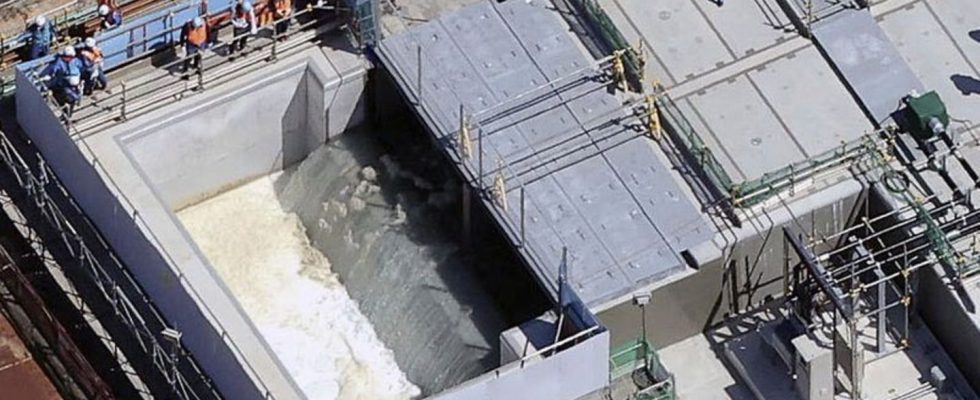radioactivity
Japan begins dumping Fukushima coolant water
Tepco dilutes the cooling water with seawater to such an extent that the tritium concentration drops to 1500 becquerels per liter. It will then be dumped in the Pacific via an underwater tunnel. photo
© —/Kyodo News/AP/dpa
Japan is getting serious: a good twelve years after the meltdown in Fukushima, the discharge of treated cooling water from the nuclear ruins into the sea has begun. The outrage at home and abroad is great.
Protests at home and abroad
A group of citizens demonstrated near the plant with banners and chants against the dumping. China also reacted angrily: “The forcible discharge into the ocean is an extremely selfish and irresponsible act that disregards the global public interest,” said a statement from the Ministry of Foreign Affairs in Beijing. Japan has made itself a “saboteur of the ecological system and a polluter of the global marine environment”. China then stopped the import of fishery products from Japan, as reported by the state broadcaster CCTV, citing the customs authority in Beijing.
The contaminated cooling water is treated before dumping, but the filter system cannot filter out the radioactive isotope tritium. Tepco therefore dilutes the water with seawater to such an extent that the tritium concentration drops to 1,500 becquerels per liter, which is less than a fortieth of the national safety standard. Before the introduction on Thursday, the concentration was between 43 and 63 becquerels per liter. About 7,800 tons will be discharged into the sea over the next 17 days. At the end of the financial year running until March, it should be a total of 31,200 tons. This corresponds to the capacity of about 30 of the tanks.
Total amount of radioactive entry is preserved
Japan is simply diluting the cooling water with seawater until the relevant limit values are met, criticized the medical organization IPPNW. According to IPPNW doctor Jörg Schmid, the total amount of radioactive discharge into the sea remains the same and represents a continuing potential hazard. Scientific studies confirmed that even low levels of radiation can lead to damage to health, it said.
The International Atomic Energy Agency (IAEA), on the other hand, had declared that Japan was meeting international safety standards. The effects on people and the environment are “negligible”. Japan justifies the controversial measure by saying that there will soon be no more space for the tanks and that the decommissioning work on the nuclear ruins will be hampered. Leaks could also occur, for example, in the event of another earthquake. Dumping the huge amounts of water is expected to take around 30 years.
Fishermen worry about the reputation of their products
Japan’s fishermen remain vehemently opposed to government action. “Although the government has decided to take full responsibility from a national perspective, fishermen across the country who have witnessed this moment have become even more concerned,” the fisheries association said. Since the disaster, the fishermen have been trying to recover from the business losses caused by the disaster. Now they fear the reputation of their seafood will be tarnished again.
However, experts point out that the discharge of contaminated cooling water from nuclear power plants is routine around the world. Critics, on the other hand, argue that the Fukushima case is not a normally functioning nuclear power plant, but reactors destroyed as a result of the worst nuclear disaster since Chernobyl in 1986.

